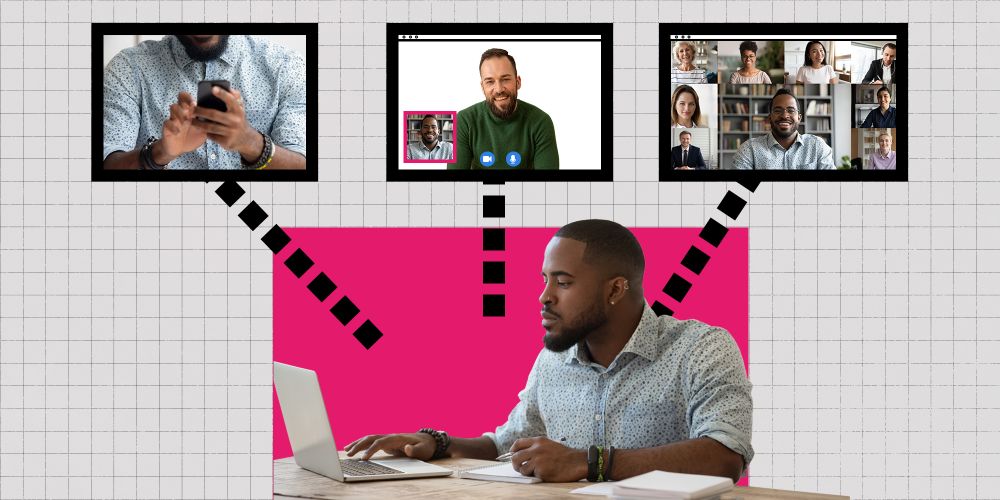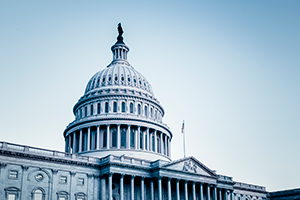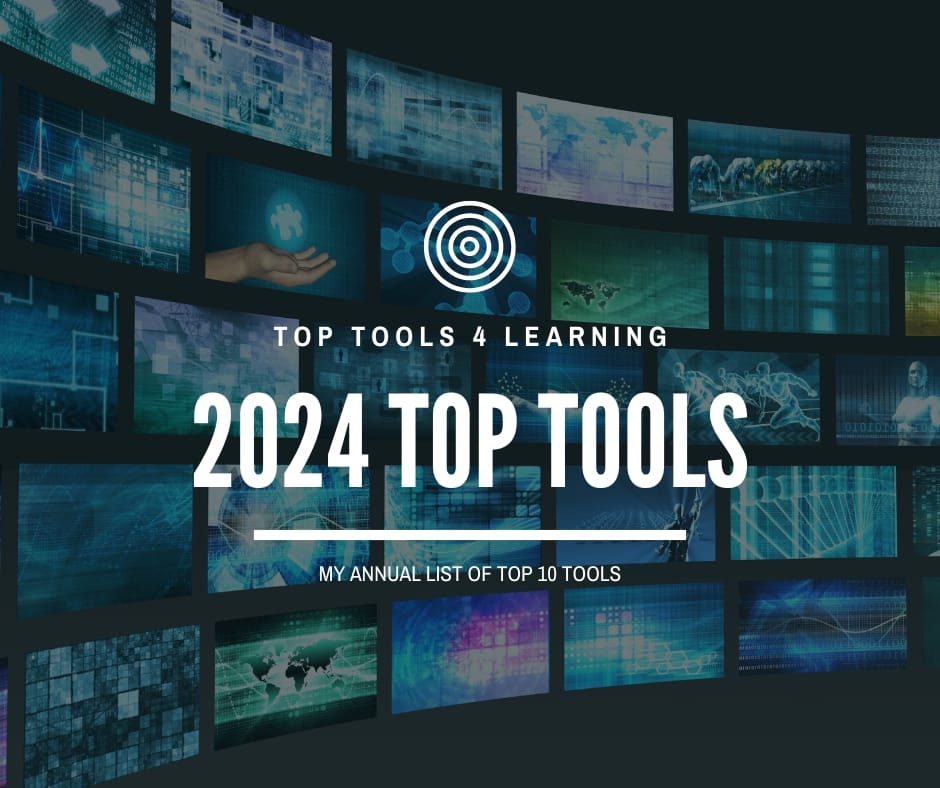What is distance learning?
Distance learning refers to the education of students who may not always be physically present at a school. Historically, this involved correspondence between an individual and an academic institution by mail. Today, it involves learning through online tools and platforms. A distance learning program can take place entirely in online learning environments, or a combination of distance learning and traditional classroom instruction (called blended or hybrid). Massive open online courses (MOOCs), offering large-scale interactive participation and learning resources, are more recent developments in distance learning. During the COVID-19 pandemic and subsequent campus closures, educators and institutions relied heavily on distance learning methods to complete the semester.
Types of distance learning
Within the scope of distance education there are two very important concepts: synchronous and asynchronous learning.
Synchronous learning
Synchronous learning requires some form of communication during classroom time. It has a less flexible learning plan because the classes are conducted on a set schedule using videoconferencing or live online webinars.
- Fixed-time online courses are the most common type of distance education. Students sign into their online educational portal to access distance learning resources, including live class video streams. Using this method, students and instructors make use of live chats and discussion boards for communication.
- Video conferencing takes advantage of tools and platforms, like Zoom, that have expansive capabilities and can be used globally. Video conferencing provides learning opportunities for students by allowing them to see their instructors and peers in real time, creating a sense of community in the virtual classroom.
Synchronous distance learning most closely mirrors the typical in-class experience. Delivering course content virtually in real time creates a sense of intimacy and timeliness that is particularly effective for increasing student engagement. Depending on supporting technology, such as learning management platforms, educators can also respond directly to questions and discussions, provide feedback and use interactive polling and click-on-target questions to gauge comprehension and ensure students are moving in the right direction. This includes the ability for attending students to access lecture slides, engage with their peers in discussion threads, and answer interactive questions.
Synchronous learning provides opportunities to apply concepts and collaborate. It’s especially useful when teaching material that requires immediate feedback or clarification to keep students on track. There are important social benefits as well. Given the new normal students and faculty find themselves contending with, the opportunity to connect with peers, work together and see each other can go a long way in alleviating the sense of isolation many may feel when learning in a virtual environment.
Asynchronous learning
Asynchronous learning allows the student to work at their own pace, and normally has a very distinct syllabus, with weekly deadlines for homework and other assignments. Students have regular access to their peers and their instructors, although this is typically managed through email and discussion boards.
- Open schedule online courses give students the greatest amount of freedom. All deadlines are pre-set and students are encouraged to be self-sufficient and complete their assignments on their own timelines. Without dedicated class time, students complete their coursework whenever they choose to allot the time to do so. Final exams normally occur at the end of the semester, and are open for several days to provide students with some flexibility as to when they choose to take it.
- Hybrid distance education combines synchronous and asynchronous methods of online learning. Students must adhere to specific predetermined deadlines for assignment completion. The majority of the coursework is completed online, but in some cases, the student can physically speak with an instructor in person through live chats or video conferencing. Hybrid distance education may also include attending a physical classroom for certain periods of time. Conversely, it may involve covering specific modules and then returning to distance learning to complete additional modules and assignments.
Asynchronous learning is particularly beneficial if students with varying levels of Internet access find it difficult to follow a specific schedule. Accessing all course materials, readings and assignments in a single place allows students to explore topics in detail and at their own pace. Discussion forums and one-to-one communications through email are simple ways to create engagement, even if much of the learning is self-directed. Asynchronous learning also provides the opportunity for instructors to promote peer collaboration, creating specific assignments that require students to work with each other or review each other’s work outside the confines of a class schedule.
Without the benefit of live interaction, it’s especially important for students and instructors alike to communicate—or over-communicate —as the case may be. One of the disadvantages of asynchronous learning is student apathy and isolation. Taking time to set course expectations, provide clear assignment instructions and responding to student emails and discussion thread posts are essential.
How distance learning impacts students
There are many advantages to distance education. Online courses provide a more accessible learning experience for students. Accessibility in higher education means all students are provided with an equal opportunity to access course materials. This should be top of mind for educators in planning how to deliver their courses. It is no longer realistic to expect that all students have access to online materials outside of the traditional classroom, and even when they do, it’s important to take time to orient students properly. A Top Hat survey of more than 3,000 students found that 28 percent reported difficulty navigating and using online learning resources and tools. Accessibility goes hand-in-hand with flexibility: letting students choose how and where learning takes place can reduce barriers associated with finding success in higher ed.
Forming an accessible course starts with giving careful consideration to ensuring all students can benefit from your teaching model.
In online learning environments, students may feel isolated from their peers and campus communities. Participation has therefore become even more important with the shift to remote education. With in-person learning, instructors can gauge by a show of hands who understood your course material. In an online environment, opportunities for participation, such as discussion questions interspersed throughout lecture presentations, can help bridge the gap. Engagement in the classroom may start with icebreaker activities and diagnostic assessments. From here, instructors should consider introducing more collaborative activities such as case studies and debates to ensure students have ample opportunity to put theory into practice.
Academic success isn’t the only concern students face. Stable housing facilities and regular access to food, along with physical and mental health resources are also top of mind for today’s college students. This is particularly in the midst of the coronavirus pandemic. Empathetic teaching practices, such as shortening lecture modules to provide students with key takeaways and making those lectures available for students to review on their own, are essential in creating supportive learning communities. Empowering students starts with respecting their individual needs and circumstances. It’s also important to dedicate time to connect with students beyond the actual class schedule. As part of the responsibilities of teaching in an online learning environment, instructors should set aside time to answer students’ questions, provide feedback and connect with them on a more personal level, similar to on a social media site.
The future of distance learning
Students were okay with “good enough” online education at the height of the pandemic and subsequent school closures, according to Top Hat’s COVID-19 State of Flux Survey results. But they will be less likely to put up with subpar learning in the coming semester. The good news is that many students see value in the flexibility of virtual learning. In fact, around a third of students would prefer a blended approach, with both in-person and online components. The key to success is improving the online experience and ensuring students see the return on their academic investment.
It is clear that distance learning is here to stay. The fall semester is approaching and pressure on institutions to be ready to teach effectively is increasing. Regardless of what the situation on college campuses looks like in the fall, it is paramount to ensure students see the value of investing their time and effort in courses that may need to be delivered online.
Even when institutions reopen their physical doors and life returns to ‘normal,’ the ability to teach online, in-person or some combination of the two will yield important benefits in terms of flexibility, as well as dimensionalizing the learning experience. As educators and students grow more comfortable and more confident with the virtual classroom, so do the opportunities to infuse learning with new experiences and new possibilities.







